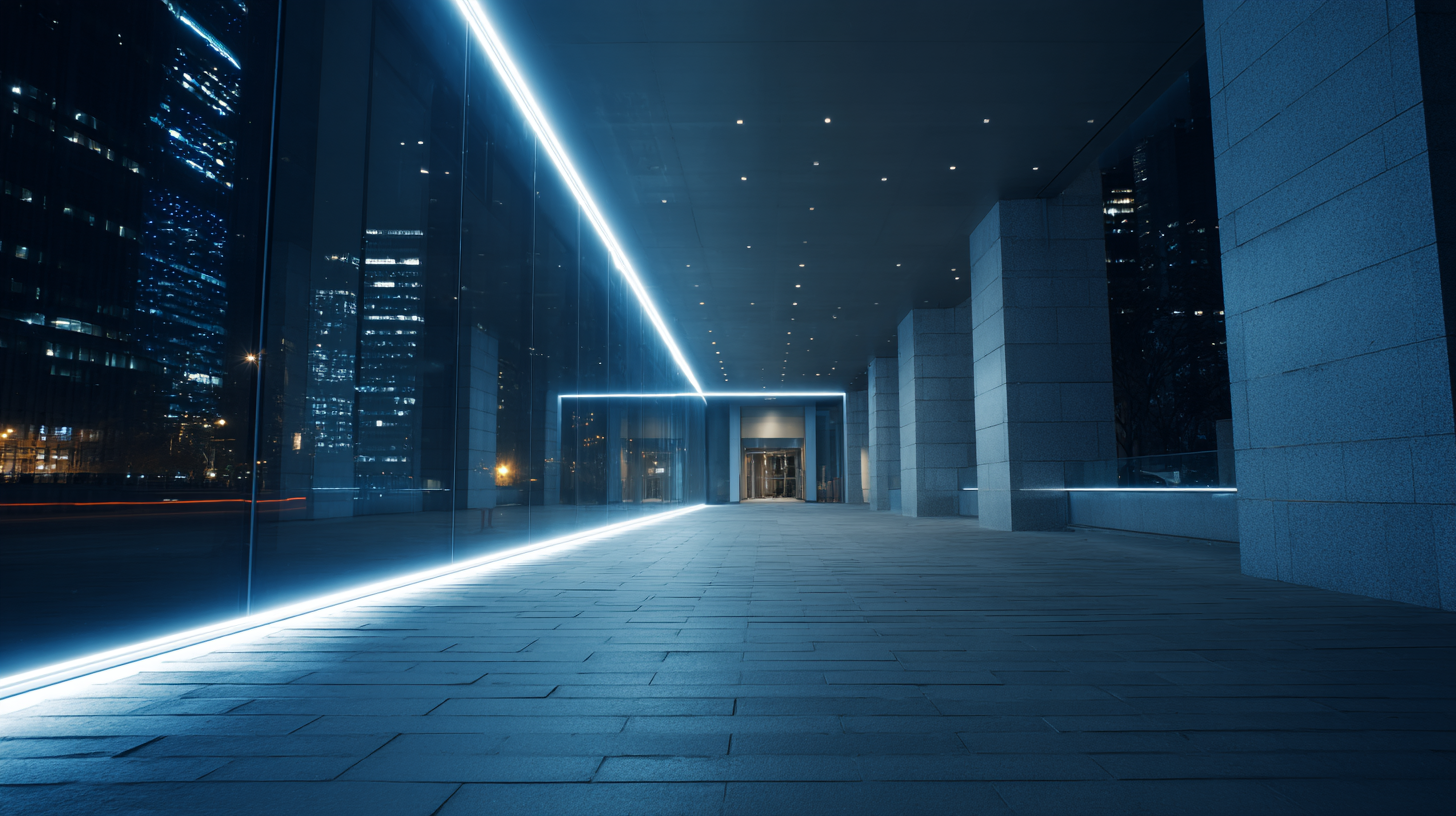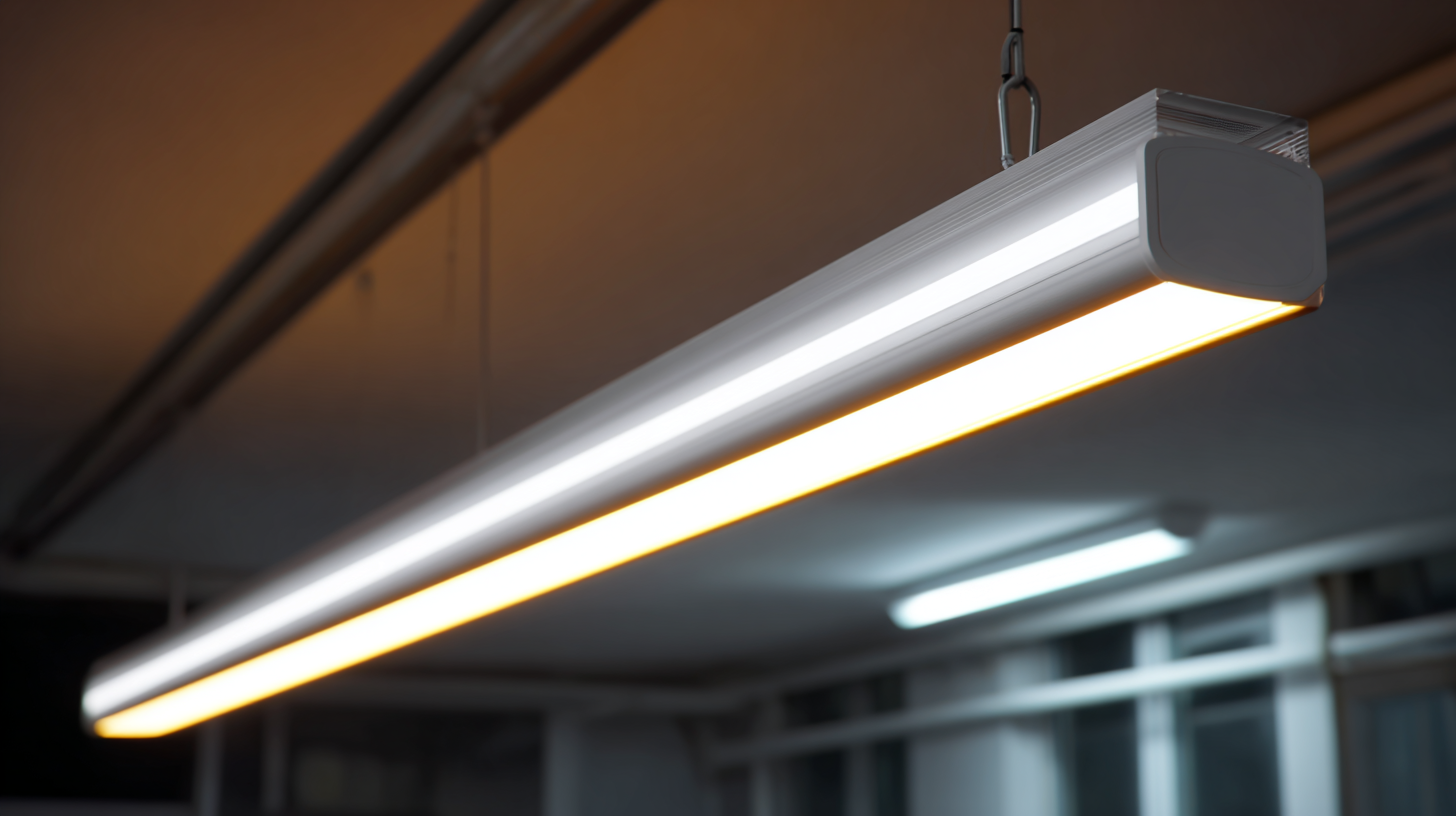Edison LED Lighting
Projects
7 Compelling Reasons Why Best LED Lighting Is the Ultimate Choice for Global Buyers
In recent years, LED lighting has emerged as the preferred choice for consumers worldwide, driven by its energy efficiency and sustainability. According to a report by the International Energy Agency (IEA), LED lighting is expected to account for about 60% of global lighting sales by 2025, highlighting a significant shift in consumer preferences.

Furthermore, the U.S. Department of Energy indicates that widespread adoption of LED technology could potentially save over 347 terawatt-hours of electricity annually, which is equivalent to the output of 44 large power plants. With benefits ranging from decreased energy consumption and longer lifespan to reduced carbon emissions, it’s no wonder that LED lighting is being embraced as the ultimate solution for global buyers.
This blog will explore seven compelling reasons why LED lighting stands out in today’s marketplace, transforming how we illuminate our spaces while promoting a sustainable future.
Benefits of Energy Efficiency in LED Lighting Compared to Traditional Options
 As global buyers increasingly turn their focus toward sustainable solutions, the advantages of LED lighting over traditional options become undeniably clear. Not only do LEDs boast a significantly longer lifespan—averaging 25,000 to 50,000 hours compared to 1,000 hours for incandescent bulbs—but they also use up to 80% less energy. According to the U.S. Department of Energy, widespread use of LED lighting could save more than $30 billion annually by 2027, illustrating the substantial financial benefits of this technology.
As global buyers increasingly turn their focus toward sustainable solutions, the advantages of LED lighting over traditional options become undeniably clear. Not only do LEDs boast a significantly longer lifespan—averaging 25,000 to 50,000 hours compared to 1,000 hours for incandescent bulbs—but they also use up to 80% less energy. According to the U.S. Department of Energy, widespread use of LED lighting could save more than $30 billion annually by 2027, illustrating the substantial financial benefits of this technology.
In addition to cost-efficiency, the environmental impact of adopting LED lighting cannot be overlooked. LEDs emit significantly less heat, leading to lower energy consumption for cooling systems in commercial and residential buildings. A report by the International Energy Agency indicates that transitioning to LED lighting could reduce global electricity demand for street lighting by over 60%, which translates to a substantial decrease in greenhouse gas emissions. These compelling statistics not only underscore the economic viability of LED lighting but also highlight its crucial role in driving sustainability efforts worldwide.
The Longevity Advantage: Lifetime vs. Replacement Costs of LED Lights
When considering lighting options, the longevity of LED lights stands out as a key advantage over traditional lighting solutions. According to the Department of Energy, LEDs can last up to 25 times longer than incandescent bulbs, with an average lifespan of 15,000 to 50,000 hours. This remarkable durability means fewer replacements, ultimately lowering the total cost of ownership for consumers and businesses alike. In contrast, incandescent bulbs typically only last around 1,000 hours, resulting in frequent replacements and increased waste.
Moreover, the replacement costs associated with short-lived lighting solutions add up significantly. A report from the National Lighting Bureau indicates that for an enterprise using incandescent bulbs, the lifetime cost—including purchase, installation, and replacement—is nearly five times higher than that of LEDs. With the initial price of LED lights decreasing over the years, this efficiency becomes even more pronounced. As global buyers seek practical and sustainable solutions, the longevity of LED lighting not only reduces expenditures but also minimizes environmental impact, making it the premier choice in today's market.
Cost Comparison of Different Lighting Options Over Time
This bar chart illustrates the total cost of three different types of lighting options—Incandescent, CFL (Compact Fluorescent Lamp), and LED—over a period of 10 years. The data suggests that while Incandescent bulbs are cheaper initially, their overall costs—including energy consumption and replacement—are significantly higher compared to LED and CFL options. LED lighting emerges as the most cost-effective choice in the long run.
Exploring the Ecological Impact: Why LEDs Are the Eco-Friendly Choice
LED lighting has become increasingly popular among global buyers, largely due to its significant ecological advantages. One of the primary factors contributing to its eco-friendliness is energy efficiency. LEDs consume up to 80% less electricity than traditional incandescent bulbs, leading to lower greenhouse gas emissions. This reduction in energy consumption not only conserves natural resources but also helps mitigate climate change, making LEDs an essential choice for environmentally conscious consumers.
In addition to energy savings, LED lights have a longer lifespan compared to conventional lighting options. A typical LED can last over 25,000 hours, significantly outpacing the average incandescent bulb, which lasts around 1,000 hours. This longevity means fewer discarded bulbs, ultimately resulting in reduced waste in landfills. Moreover, many LEDs are also free from hazardous materials like mercury, making them safer for the environment. By choosing LED lighting, buyers are investing in a sustainable future, ultimately contributing to a cleaner and healthier planet for generations to come.
Brightness and Color Quality: How LED Lighting Enhances Spaces Effectively
When it comes to enhancing the brightness and color quality of any space, LED lighting stands out as the ultimate choice for global buyers. One significant advantage of LED technology is its ability to produce light that closely mimics natural sunlight. This characteristic is particularly beneficial when it comes to painting and interior design. A recent study indicated that artificial lighting could significantly alter the perception of wall colors, causing warm or cool tones to dominate, depending on the bulb type used. By utilizing LEDs with adjustable color temperatures, one can ensure that the true color of paint shines through, enhancing overall aesthetics effectively.
Moreover, the emotional impacts of lighting have become a focal point in various studies. Research shows that different colors of light can significantly influence mood and emotional responses, such as calming, relaxing, or invigorating one's space. As the global demand for advanced and energy-efficient lighting solutions continues to surge, the commercial LED market is projected to grow from USD 3.1 billion in 2025 to USD 4.8 billion by 2034, reflecting a compound annual growth rate of 6.5%. This trend underscores the importance of integrating high-quality LED lighting into both residential and commercial spaces, providing not only practical benefits but also enhancing the overall ambiance.
Cost Analysis: The Long-Term Savings of Investing in LED Technology
As businesses face increasing pressure to optimize costs while maintaining competitiveness, investing in LED technology emerges as a strategic decision yielding significant long-term savings. Recent research highlights a growing trend among organizations to abandon traditional cost-cutting measures in favor of sustainable, growth-oriented cost optimization strategies. LED lighting systems not only reduce energy consumption but also lower maintenance costs, presenting a compelling case for organizations looking to leverage technology for financial efficiency.

Tips for Maximizing LED Investment:
1. Conduct an Energy Audit: Before transitioning to LED lighting, perform an energy audit to identify areas where energy consumption can be drastically reduced.
2. Consider Lifecycle Costing: Evaluate total costs over the lifecycle of the LED fixtures, including installation, maintenance, and energy savings, rather than just initial purchase price.
3. Leverage Smart Technology: Integrating smart controls with LED lighting can enhance efficiency by adjusting illumination based on occupancy, thereby driving down overall energy costs further.
Investing in LED lighting is not just an environmental choice; it's a financial imperative. By embracing this technology, buyers can realize substantial operational savings, aligning well with macroeconomic trends that prioritize effective resource allocation and resilience against future market shifts.
